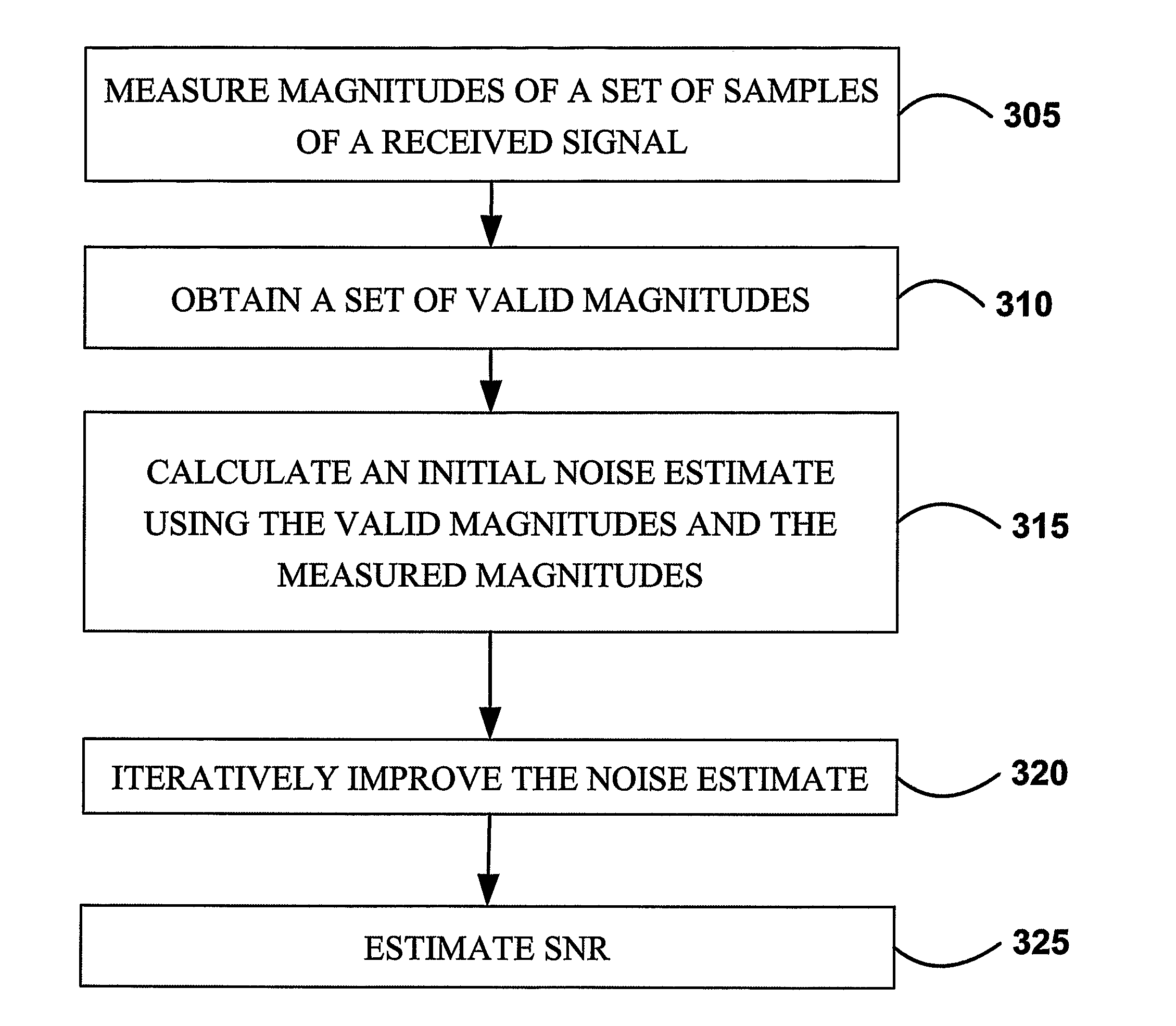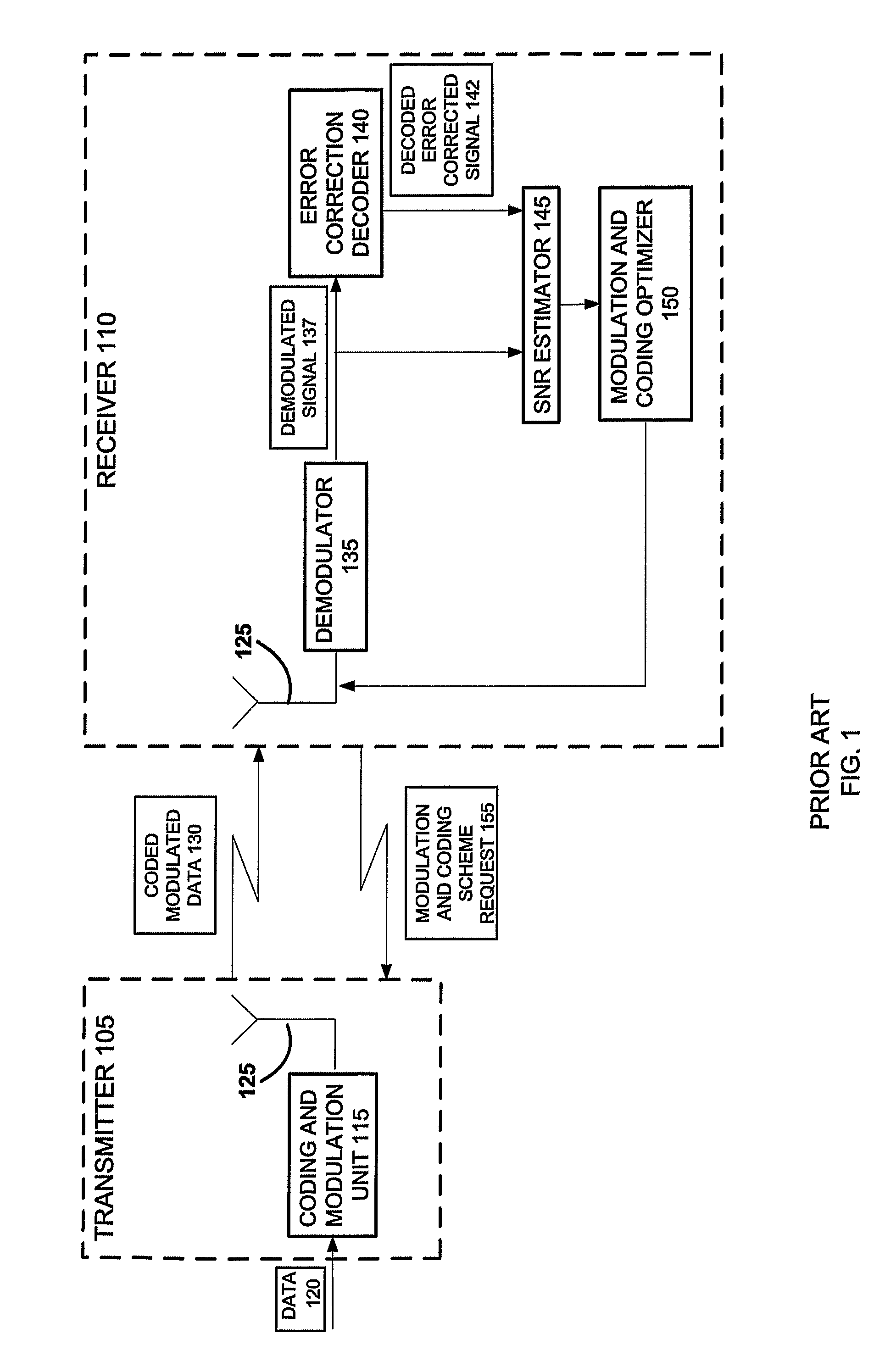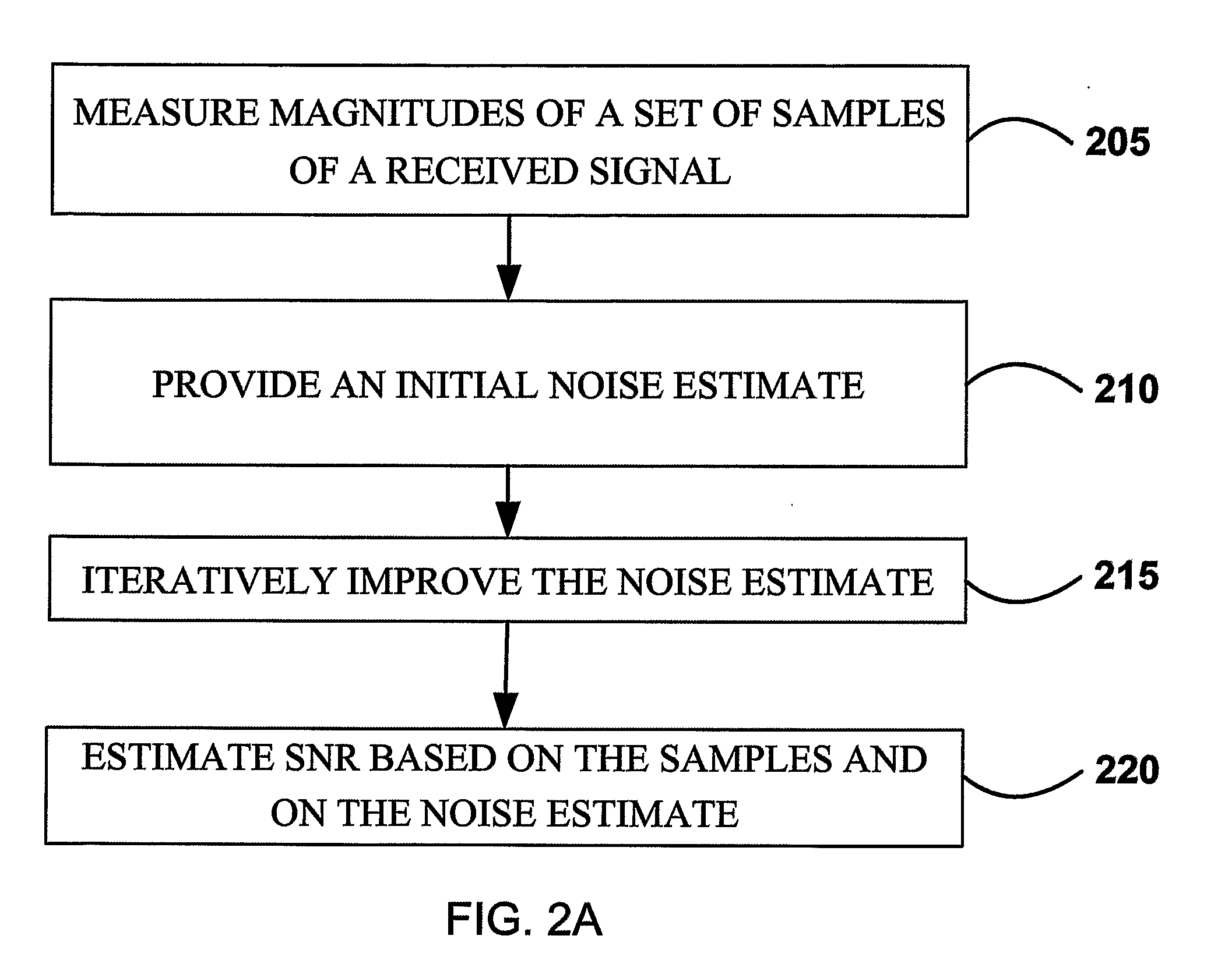Snr estimation
a communication system and signal noise technology, applied in the direction of link quality based transmission modification, transmission, electrical equipment, etc., can solve the problems of complete breakdown of communication, degraded quality of received signal, and millimeter wave communication link affected by fading, so as to improve the accuracy of snr estimation, and improve the effect of snr estimation
- Summary
- Abstract
- Description
- Claims
- Application Information
AI Technical Summary
Benefits of technology
Problems solved by technology
Method used
Image
Examples
Embodiment Construction
[0069]The present invention, in some embodiments thereof, relates to a method for Signal to Noise Ratio (SNR) estimation in a communication system and, more particularly, but not exclusively to a method for SNR estimation in a communication system which uses Adaptive Coding and Modulation (ACM). The SNR estimates may then be used to dynamically select ACM parameters. The ACM parameters include, by way of a non-limiting example, an optimal modulation and coding combination, transmission power, pilot symbols power and density, transmitted spectral density, bandwidth, and other parameters.
[0070]Example embodiments of an SNR estimator described herein estimate SNR in variable-amplitude, in variable-phase, and in variable-amplitude variable-phase communications systems.
[0071]The communication system transmits signals modulated, in amplitude, in phase, in frequency, or in some combination of the above, as is well known in the art.
[0072]Example embodiments of the invention provide a method...
PUM
 Login to View More
Login to View More Abstract
Description
Claims
Application Information
 Login to View More
Login to View More - R&D
- Intellectual Property
- Life Sciences
- Materials
- Tech Scout
- Unparalleled Data Quality
- Higher Quality Content
- 60% Fewer Hallucinations
Browse by: Latest US Patents, China's latest patents, Technical Efficacy Thesaurus, Application Domain, Technology Topic, Popular Technical Reports.
© 2025 PatSnap. All rights reserved.Legal|Privacy policy|Modern Slavery Act Transparency Statement|Sitemap|About US| Contact US: help@patsnap.com



